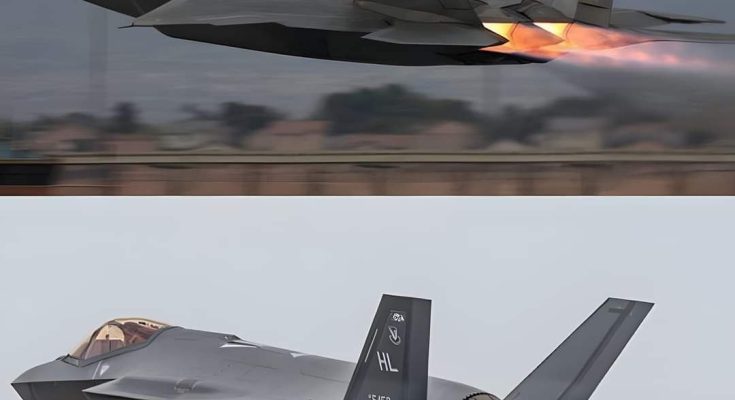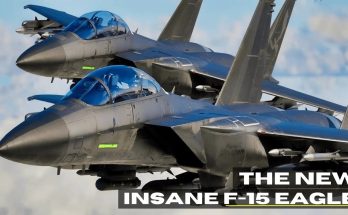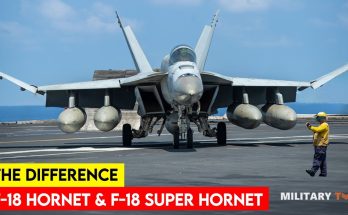The F-35 Lightning II and F-22 Raptor represent the pinnacle of 5th-generation fighter technology, offering unparalleled capabilities in terms of stealth, speed, and agility. However, as global military dynamics evolve and new threats emerge, the U.S. and its allies are already looking ahead to the next leap forward: the 6th-generation fighter. Here’s why the need for such an aircraft is pressing and what it could entail:
1. Evolving Threat Landscape
As advanced air defenses, hypersonic weapons, and counter-stealth technologies continue to evolve, existing 5th-gen fighters like the F-35 and F-22 may struggle to maintain their edge. The future battlefield will involve a range of sophisticated threats, including:
-
Advanced anti-air missile systems capable of targeting stealth aircraft.
-
Unmanned aerial vehicles (UAVs) and drones that can swarm or conduct complex operations.
-
Hypersonic missiles that can potentially outrun current fighters’ defense systems.
A 6th-gen fighter would be equipped with technologies designed to counter these emerging threats and maintain air superiority.
2. AI and Autonomous Capabilities
One of the defining features of a 6th-gen fighter could be artificial intelligence (AI) and autonomous operations. The ability for aircraft to operate semi-autonomously or as part of a larger networked force will change the way aerial combat is conducted. AI could be used to:
-
Optimize flight performance in real-time, adjusting tactics on the fly.
-
Integrate seamlessly with other aircraft and defense systems, sharing data instantly across a network.
-
Allow aircraft to conduct operations with less human input, enabling faster decision-making and potentially reducing pilot workload.
3. Enhanced Stealth and Survivability
While current 5th-gen fighters like the F-35 and F-22 are designed for stealth, future adversaries will develop methods to counteract this advantage. To stay ahead, 6th-gen fighters would need:
-
Improved stealth technology that can evade next-generation radar and sensors.
-
Adaptive camouflage or other features to change the aircraft’s signature and blend into various environments.
-
Reduced detectability even from advanced infrared sensors, allowing aircraft to operate in contested environments without being easily tracked.
4. Integration of Directed Energy Weapons
Directed energy weapons (DEWs), such as lasers, could become a key component of future fighters. These weapons offer the potential to:
-
Neutralize incoming missiles or enemy aircraft without the need for traditional ammunition.
-
Provide precision targeting against a range of threats, including drones or hypersonic projectiles.
-
Reduce the need for large, complex missile payloads, giving the aircraft more flexibility and reducing the logistical burden.
Integrating DEWs would require advancements in power generation and heat dissipation technologies, which could be part of the 6th-gen fighter’s design.
5. Next-Level Propulsion
Current fighters like the F-22 and F-35 rely on traditional jet engines, but the 6th-gen fighter may incorporate more advanced propulsion systems such as:
-
Variable-cycle engines, allowing the aircraft to optimize its engine performance for different speeds and altitudes, enhancing fuel efficiency and agility.
-
Advanced hypersonic flight capabilities, enabling speeds beyond Mach 5, which could drastically reduce mission times and allow aircraft to rapidly strike high-value targets.
These engines would also need to operate in environments where extreme heat and pressure are common, requiring new breakthroughs in materials and propulsion technology.
6. Hypersonic Missile Integration
As the U.S. and other countries develop hypersonic missiles, the 6th-gen fighter must be capable of carrying and launching these weapons. These weapons travel at speeds greater than Mach 5, offering unmatched speed and agility. A 6th-gen fighter might:
-
Carry and launch hypersonic weapons, giving it the ability to strike distant targets before an enemy has time to respond.
-
Use hypersonic capabilities for anti-surface warfare, providing new options for attacking naval and ground targets with extreme precision.
7. Advanced Cockpit and Pilot Systems
As technology evolves, so too will the role of the human pilot. Future 6th-gen fighters may feature:
-
Next-generation cockpit displays using augmented reality (AR) or heads-up displays (HUDs) to provide real-time data on the battlefield.
-
Neural interfaces that could allow pilots to control the aircraft with their thoughts or muscle movements, reducing the physical and cognitive burden of flying in complex environments.
-
Health-monitoring systems to ensure the pilot’s safety and performance during extended missions, especially at extreme altitudes and speeds.
8. Unmanned and Manned Roles
The future of air combat may involve a mix of manned and unmanned platforms. A 6th-gen fighter could:
-
Operate as a manned aircraft with a human pilot, but also control unmanned wingmen that can perform autonomous tasks, such as scouting, jamming enemy radar, or providing additional firepower.
-
Work in team-based operations, where the manned fighter and drones complement each other, creating a force multiplier effect.
9. Multi-Domain Operations
Modern warfare is not limited to the skies—land, sea, space, and cyber operations all play a role. A 6th-gen fighter will need to be multidimensional, able to seamlessly integrate into a broader multi-domain battle space. This includes:
-
Cybersecurity to protect against hacking or jamming attempts.
-
Integration with space-based systems for navigation and communications.
-
A deep connection with satellite and ISR (Intelligence, Surveillance, and Reconnaissance) systems to make real-time decisions based on the overall battlefield picture.
10. International Competitiveness
The development of a 6th-gen fighter is not just about technological advancement for the U.S.; it’s about maintaining global air superiority. Countries like China and Russia are also investing in next-generation fighter designs, which makes the need for the U.S. to maintain a competitive edge even more critical. The Next Generation Air Dominance (NGAD) program in the U.S. is already pushing forward to create a new family of fighters that may form the foundation of the 6th generation.
Conclusion:
The F-35 and F-22 fighters are formidable machines, but as new technological challenges and adversaries arise, the U.S. will need a fighter that pushes beyond the capabilities of these 5th-generation platforms. A 6th-gen fighter will be defined by advanced AI, unmanned capabilities, hypersonic weapons, and next-level stealth to maintain dominance in a rapidly evolving battlefield. The future of air combat is on the horizon, and the development of a 6th-generation fighter is essential to ensuring continued air superiority for years to come.



